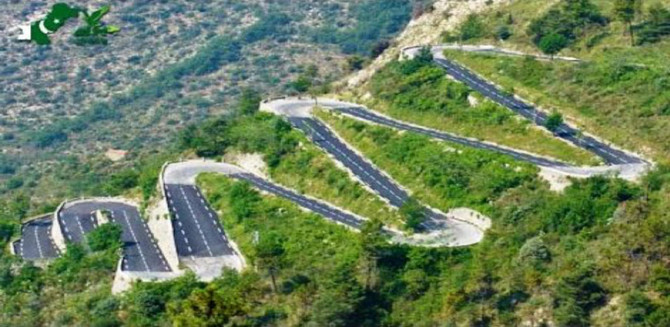The British Backpacker Society recently identified Pakistan as its top travel destination, calling it “one of the friendliest countries on Earth, with mountain scenery that is beyond anyone’s wildest imagination.”
On a social media blog, the backpackers, who explored more than 101 countries, declared Pakistan the clear winner of the “British Backpacker Society’s top 20 adventure travel destinations 2018,” encouraging keen travelers to book a trip to Pakistan immediately.
Such descriptions of Pakistan as a tourist-friendly country may come as a surprise to many. Yet Pakistan, in addition to several ancient historical landmarks, is blessed with one of the most amazing landscapes, mountain ranges and valleys in the world.
Northern Pakistan is home to the world’s three famous mountain ranges — the Himalayas, the Karakorams and the Hindukush.
The area, blessed with high mountains, landscapes, lakes, glaciers and valleys with breathtaking views, coupled with the warm hospitality of the local people, is a dream for any tourist.
With more than 20 peaks of over 20,000 feet (6,100 meters) and four over 8,000 meters (out of 14 in the world), the area is a paradise for mountaineers, climbers, trekkers and hikers. The shapes, forms, sizes and colors of these peaks provide tremendous contrasts that defy description. Some of these peaks include: K-2 (8,611 meters, world’s second highest) — the undisputed monarch of the sky; Nanga Parbat (8126 meters) — once feared as the “killer mountain”; and Broad Peak (8,047 meters) — massive and ugly.
There are several other peaks over 7,000 meters in these mountain ranges that are still to be explored.
For many centuries caravans braved these treacherous mountains, treading precariously along paths providing shortcuts between Central Asia and the rich markets of South Asia.
In 1967, Pakistan and China joined hands to construct the 900-kilometer “Karakoram Highway” (also known as the “Eighth Wonder of the World”) on the alignment of the ancient Silk Route.
For its sheer mountain grandeur and breathtaking panorama, few places on earth can match the superb landscape through which the Karakoram Highway snakes.
The northern areas of Pakistan also host some of the longest glaciers (outside the polar region), especially in the Karakorams. The Siachin glacier is 75 kilometers long. The Hispar, (52 kilometers) joins the Biafo at the Hispar La (5,154 meters) to form a 116-kilometer ice corridor. The Batura is 58 kilometers, but the most outstanding of all is the Baltoro (62 kilometers).
Several high-altitude lakes such as Sheosar (in the Deosai Plains), Naltar (in the Naltar Valley), Satpara Tso (in Skardu), Katzura Tso (in Skardu) and Tso (in the Shigar) give a grandeur to the whole area.
The most famous and magnificent of these is lake “Saif-ul-Malook,” which has rich eco-diversity and species of blue-green algae that give an eye-catching contrast to its crystal-clear water.
The presence of several high peaks, lakes and glaciers means that the whole area is home to a number of adventure sports — enjoyed by locals and foreign tourists alike.
Since 1954, when the Karakoram Range was opened to expeditions for climbing and trekking, the mountains and glaciers of the north have become an international playground.
There are hundreds of peaks lying unclimbed and posing a challenge to mountaineers and climbers from all over the world.
Similarly, those who dare to take up the challenge of the roaring mountain rivers in northern Pakistan know the excitement and thrill that such sports offer.
Tourists undertake white-water sports such as rafting, canoeing and kayaking in the rivers Indus, Gilgit, Hunza, Swat, Shigar, Shayok and Kunhar. Similarly, the rivers and lakes of northern Pakistan are filled with trout, which is very popular with anglers.
Ski facilities are also available at Malam Jabba (Swat Valley), Naltar (near Gilgit) and Kalabagh (Nathiagali). An annual ski tournament is organized by the Pakistan Ski Federation at Malam Jabba and Naltar in February.
The most popular sport in the area is polo, which originated here. The polo played in this area is a rugged and freestyle version of the more sedate variety known on the plains.
Passion for polo remains the greatest on the world’s highest polo ground. Every year, Shandur (3,700 meters above sea level) invites visitors to experience a traditional polo tournament between the Chitral and Gilgit teams.
The festival also includes folk music, folk dance, traditional sports and a camping village set up on the pass.
The magnificent northern areas of Pakistan have everything — from magnificent and sky-kissing peaks to mesmerizing lakes. This, together with the affordable cost and warm hospitality, makes Pakistan a top destination for tourists to explore.
Pakistan’s North: Mountains, lakes and breathtaking views to quench any tourist’s wanderlust
Pakistan’s North: Mountains, lakes and breathtaking views to quench any tourist’s wanderlust










